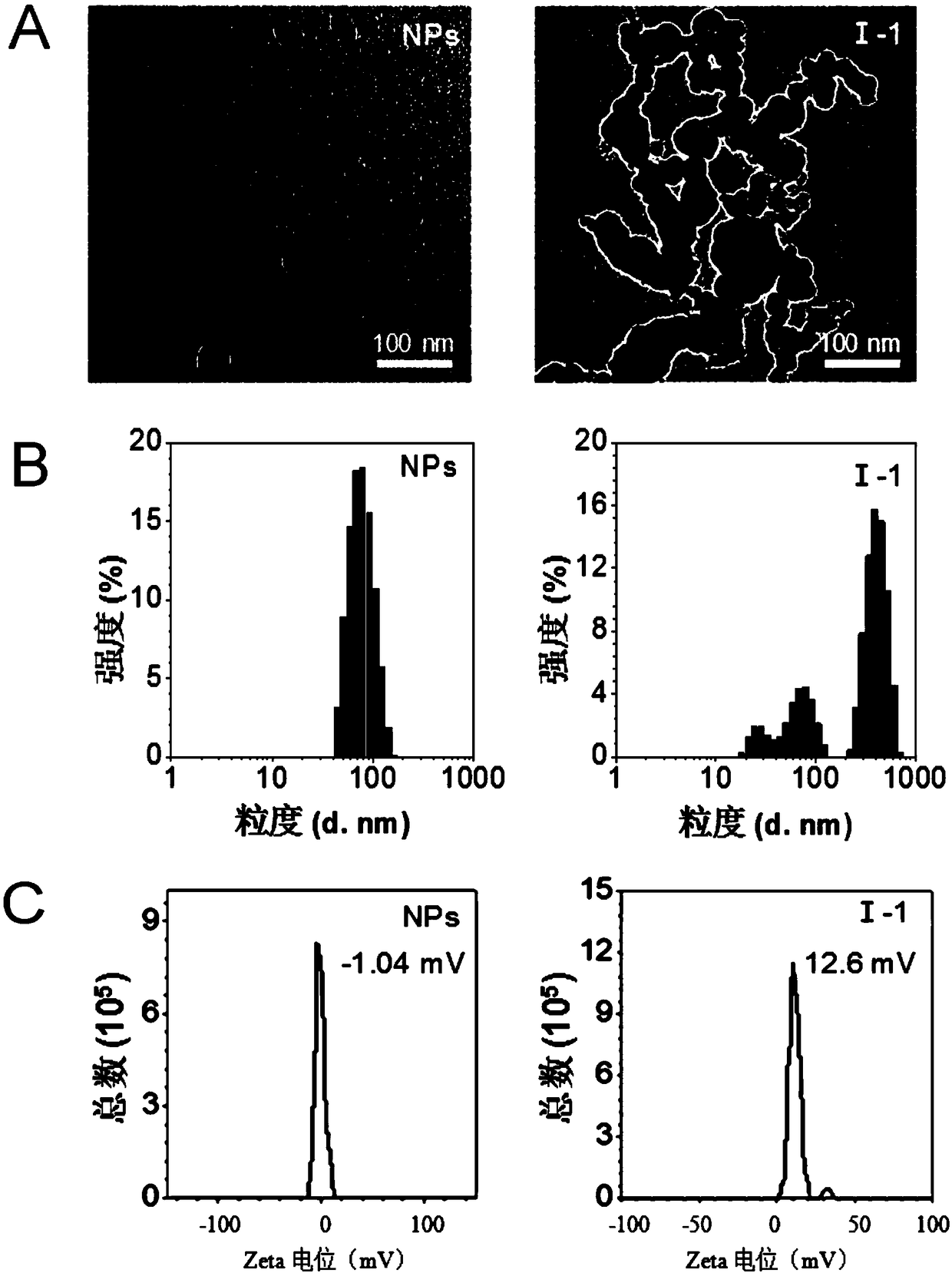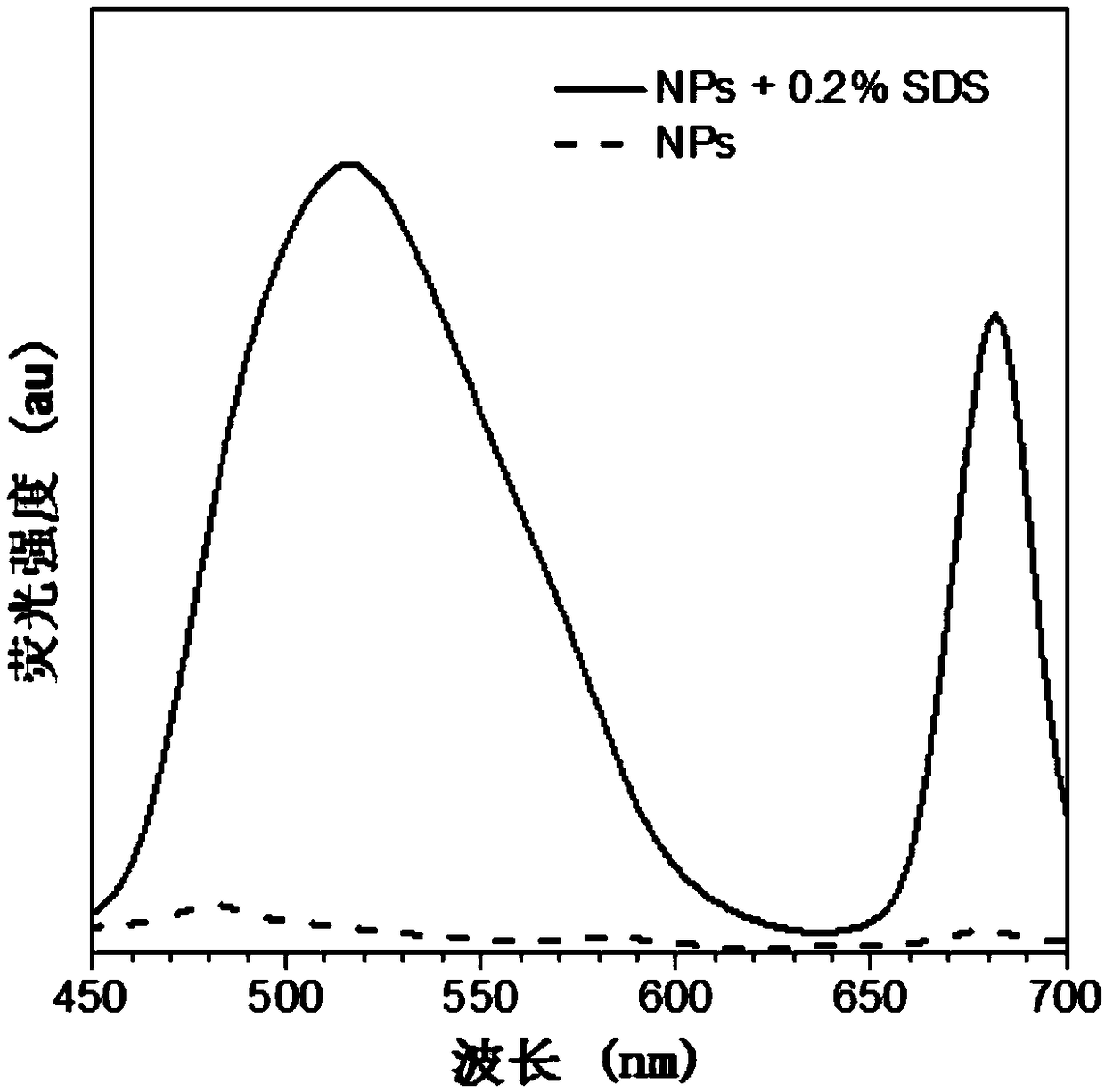Double-organelle-targeted nano probe as well as preparation and application thereof
A nanoprobe and organelle technology, applied in the field of nanoprobes, can solve the problems of reducing the intensity of emitted light, poor photostability, high background noise, etc., and achieve the effects of reducing membrane potential, improving stability, and increasing accumulation.
- Summary
- Abstract
- Description
- Claims
- Application Information
AI Technical Summary
Problems solved by technology
Method used
Image
Examples
Embodiment 1
[0056] Example 1 Mitochondria and lysosomes—preparation of dual organelle-targeted nanoprobes (1) Preparation of mitochondria-targeted AIE molecule I-1
[0057]
[0058] (1-1) Add 2,4-dihydroxybenzaldehyde V-1 (690mg, 5.0mmol) and 1,6-dibromohexane (1.22g, 5.0mmol) into 20mL of acetonitrile, and then add potassium carbonate ( 690mg, 5.0mmol) in N 2 Under reflux, stir the reaction for 6h, spin to dry the solvent, and separate through a silica gel column (PE:EA=80:1) to obtain compound II-1;
[0059] (1-2) Compound IV-1 (300mg, 1.0mmol) and triphenylphosphine (262mg, 1.0mmol) were dissolved in 5mL of chloroform (or acetonitrile), under N 2 Under reflux, stir the reaction for 5h, rotary evaporate under reduced pressure, remove the solvent, and recrystallize to obtain compound III-1;
[0060] (1-3) Compound III-1 (250mg, 0.44mmol) was dissolved in ethanol, then hydrazine hydrate (11mg, 0.22mmol) was added, and the 2 Under reflux, stirred and reacted for 4 hours, filtered, wa...
Embodiment 2
[0067] Example 2: Characterization of photophysical properties of nanoprobes
[0068] Aqueous solutions of I-1 (2.5 μM), II-1 (1.25 μM) and I-1 / II-1 nanoprobes (2.5 μM of I-1 and 1.25 μM of II-1) were subjected to UV-Vis absorption spectroscopy , fluorescence spectrum detection and fluorescence photo collection under ultraviolet light irradiation.
[0069] figure 2 A is the UV-Vis absorption spectrum, I-1 / II-1 nanoprobes (NPs) have two tailing peaks at 400-460nm and 700-800nm, which is due to the π– of I-1 and II-1 Caused by π interaction; figure 2 B is the emission spectrum of I-1 and the absorption spectrum of II-1. Since the emission spectrum of I-1 overlaps with the absorption spectrum of II-1, the fluorescence resonance energy transfer (FRET) process can occur, and at the same time due to the π-plane II-1 has the effect of aggregation quenching luminescence, and the nanoparticles themselves do not emit fluorescence; figure 2 C is the fluorescence spectrogram of I-1...
Embodiment 3
[0070] Embodiment 3: Hydrophobic force test of I-1 and II-1
[0071] When the nanoprobe obtained in Example 1 was in 0.2% SDS solution, the fluorescence signals of I-1 and II-1 recovered ( image 3 ), indicating that SDS can disturb the hydrophobic interaction of nanoprobes, thereby promoting the release of free I-1 and II-1 from nanoprobes. This result confirms the existence of hydrophobic interactions between the molecules that make up nanoprobes. image 3 It is the fluorescence spectrum of I-1 / II-1 nanoprobes (NPs) in solutions containing 0.2% SDS and not containing 0.2% SDS.
PUM
 Login to View More
Login to View More Abstract
Description
Claims
Application Information
 Login to View More
Login to View More - R&D
- Intellectual Property
- Life Sciences
- Materials
- Tech Scout
- Unparalleled Data Quality
- Higher Quality Content
- 60% Fewer Hallucinations
Browse by: Latest US Patents, China's latest patents, Technical Efficacy Thesaurus, Application Domain, Technology Topic, Popular Technical Reports.
© 2025 PatSnap. All rights reserved.Legal|Privacy policy|Modern Slavery Act Transparency Statement|Sitemap|About US| Contact US: help@patsnap.com



